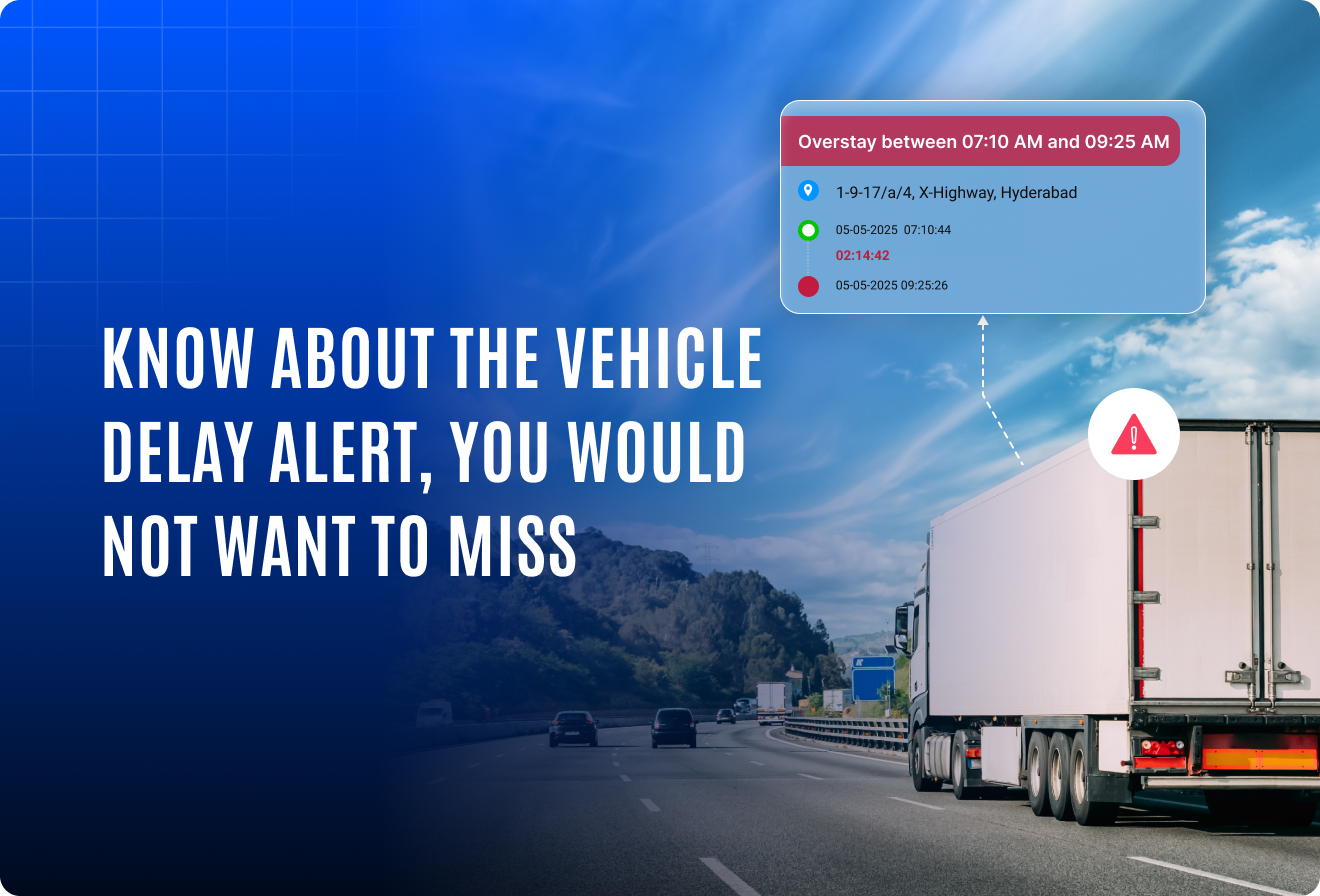Vehicle overstay: The delay alert you didn’t know you needed

Every minute a vehicle spends waiting adds up, especially when no one is tracking it.
In fleet operations, it is common for vehicles to stop at warehouses, delivery hubs, or client locations. Sometimes the engine stays on, which is called idling. Other times, it is turned off completely, which results in stoppage. In both cases, the vehicle is not moving, and valuable time is being lost.
But here is the problem. Most alert systems monitor only one condition at a time. If a vehicle idles too long, you might get notified. But the moment the engine is switched off, the system assumes everything is fine. No alert is triggered. The vehicle is still there, still delaying the job, but no one knows.
This situation is more common than most think. A 2023 study on last-mile logistics revealed that idle and dwell times can make up nearly 30 percent of total trip time in urban fleets. Yet, many fleet managers do not get alerted when vehicles are parked silently.
For system integrators and fleet software providers, this leads to visibility gaps, missed automation, and added client frustration. And for businesses that depend on timing, these unnoticed stops cause operational delays, higher costs, and unhappy customers.
This is why enhanced overstay alerts that track both idle and stoppage are becoming necessary.
What is a fence overstay alert?
A fence overstay alert is a smart notification that tells you when a vehicle remains inside a defined area for longer than expected.
These defined areas are often geofences, digital boundaries set around locations like warehouses, delivery points, depots, or customer sites. When a vehicle enters the area, the timer begins. If it stays beyond the set time, an alert is sent to notify managers or dispatch teams.
Traditionally, these alerts only monitored vehicles that were idling. That means if the engine was on but the vehicle was not moving, the system would count that as a delay. However, if the driver turned off the engine, the system would stop tracking. From a software perspective, the vehicle was no longer idling, so no alert was triggered.
But in reality, the vehicle was still there. Just… parked. Doing nothing.
This is where the new version of the fence overstay alert makes a difference. It now checks for both conditions — idle and stoppage — and combines the time spent in both states. If the total time crosses the set limit, the alert is triggered. This ensures that delays are captured more accurately, no matter how quietly they happen.
Why tracking idle and stoppage together makes a real difference
1. No more missed delays
Whether a vehicle is idling with the engine on or stopped with the engine off, the system continues tracking. This gives fleet managers a complete view of how long a vehicle really stays at a location.
2. Improved time management
By knowing exactly how long vehicles remain inside a geofence, teams can better manage schedules, reduce waiting times, and optimize vehicle rotation.
3. Better use of parking and loading zones
Overstaying vehicles can block space for others. This alert helps reduce congestion and improve turnaround at busy depots or customer sites.
4. Increased accountability
With more accurate tracking, it becomes easier to understand driver behavior, monitor unnecessary stops, and reduce misuse of fleet time.
5. Helpful across multiple industries
This feature is valuable in logistics, waste collection, construction, public transport, and more — especially in countries where manual loading, gate delays, or site waiting is common.
6. Smart actions when alerts trigger
Users can choose to receive notifications or even immobilize the vehicle if it stays beyond the allowed time. This adds an extra layer of control and automation.
Conclusion: Rethinking how we track delays
Not all delays are loud. Some are silent. A vehicle waiting inside a fenced area may not always raise concern, but it should.
For years, overstay tracking focused only on idle time. But as operations grow more complex, that limited view no longer works. Today’s fleets need smarter alerts that reflect what’s really happening on the ground.
By combining idle and stoppage monitoring, businesses can now respond faster, plan better, and eliminate guesswork from critical fleet decisions.
It is not just about tracking time. It is about seeing what was once invisible — and turning that insight into action.



